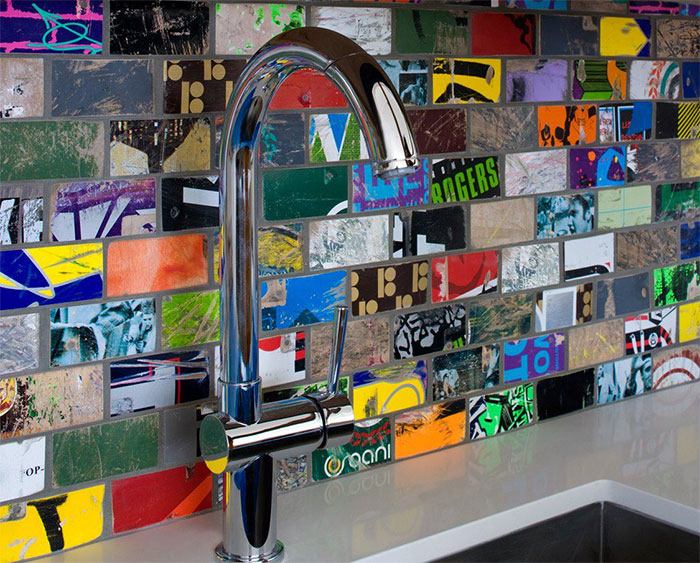Recycling is not architecture


And it's certainly not art.
Recycling, it is true, will become a deeply ingrained practice in architecture and construction. In coming years, those most skilled at this discipline will hold a business advantage over their competitors. And in terms of sustainable development, there's no doubt that we must recycle to survive.
But recycling on its own is not so virtuous as to compensate for shortfalls of ideas or aesthetic sense.
Returning from a tour of the International Contemporary Furniture Fair (ICFF) held in New York this week, I'm a bit disappointed by the persistence of ideas to the contrary. One example is a company that collects skateboard decks, chops them into pieces and offers them up as a wall tile or backsplash surface (see photo to the right).
Skateboard fail
The idea may work technically as a building material, but it fails on too many levels to list: as found art, as feature walls, as pop culture touchstone, as the charity this company purports to be, it's simply not working. Most important, it fails as the solution for addressing a viable, significant waste stream: Skateboard parts are a blip on the radar of building materials. They only work with gobs of mastic and waterproof grout.
Another company makes furniture out of bicycle parts. I love bikes, and I love good furniture. But why does this artisan choose to make furniture only from old bikes? I think it's to attract suckers on wheels like me. The results are rarely elegant, but surely they attract obsessive types.
Speaking of obsessions, Colin Selig of Walnut Creek, Calif., found an ingenious and elegant way to transform propane tanks into park benches (see photo, right). It's brilliant, but perhaps a one-hit wonder. We'll see what Selig does next.
How does recycling transcend?
Let's leave aside the question of art for the moment. How can recycling become an element of good, successful architecture?
Architecture is equal parts art, science and business. So the recycled elements must succeed on two or three of these levels to succeed as architecture. The recycled elements must offer a delightful and robust answer to multiple design challenges. And the approach must work as an aesthetic and functional solution, not merely as curiosity or self-announcement.
The Tate Modern (pictured left) is a modern classic, an example of why industrial upcycling is not only possible but desirable.
The Swiss power-duo Herzog & de Meuron transformed Giles Gilbert Scott's Bankside Power Station in 2000 into a home for the Tate Gallery, and today it stands as a universal benchmark for successful whole-building recycling. The Turbine Hall became emblematic of its success. And the Tanks -- which may have helped inspire Mr. Selig, if even indirectly -- will become central to a new building, now under construction, to extend this magnetic venue. Above, a perforated brick lattice will rise 11 stories high, glowing at night.
Tom Dixon's London home in a water tower is architecture; a duck, as Venturi would say, to be precise. But the bed-and-breakfast in Oregon made from three grain silos? It's a cute and even noble idea and a workable enclosure (thanks to Butler, a brand still visible on the metal cylinders) -- but it rises only to the level of a curiosity. If that.
Then there is the question of art -- pure art and functional art.
This demands a layer of meaning that we see in only great works of architecture, like the Tate Modern and others.
An example is the work of Shinique Smith (see below right), who turns pieces of stray clothing into exuberant bundles and collages that will be shown at Boston's Museum of Fine Arts next year.
While the works are based to some degree on the African mandala form, "I think my work is very American, and the way we consume and cast off is unique to us," the artist Smith told The New York Times recently.
In this way, Smith is channeling consumerist ephemera into abstractions that capture their innate beauty.
The schools of architectural recycling and upcycling can learn from Smith's ethos and the inventiveness of Herzog & de Meuron.
We should recycle architecturally to imbue our cities with meaning as much as to capture the essential beauty of our past energies. We must find ways to pack new uses and occupants into old buildings that have lost their original functions, yet are strong and prepared to allow us new ones.
When we recycle, it's not an end in itself. It's just one of the many tools for the successful designers and artists of the modern era.
This post was originally published on Smartplanet.com